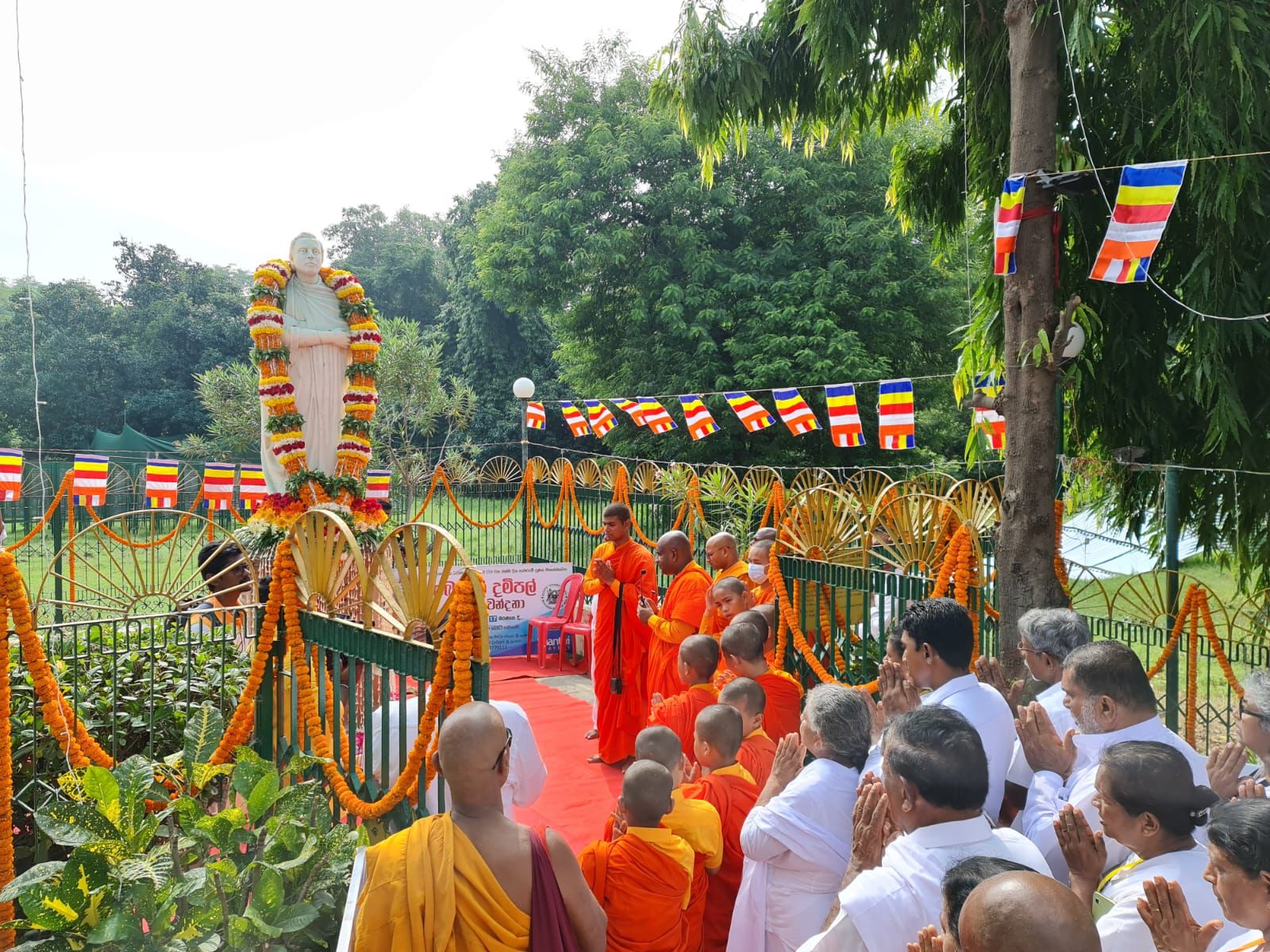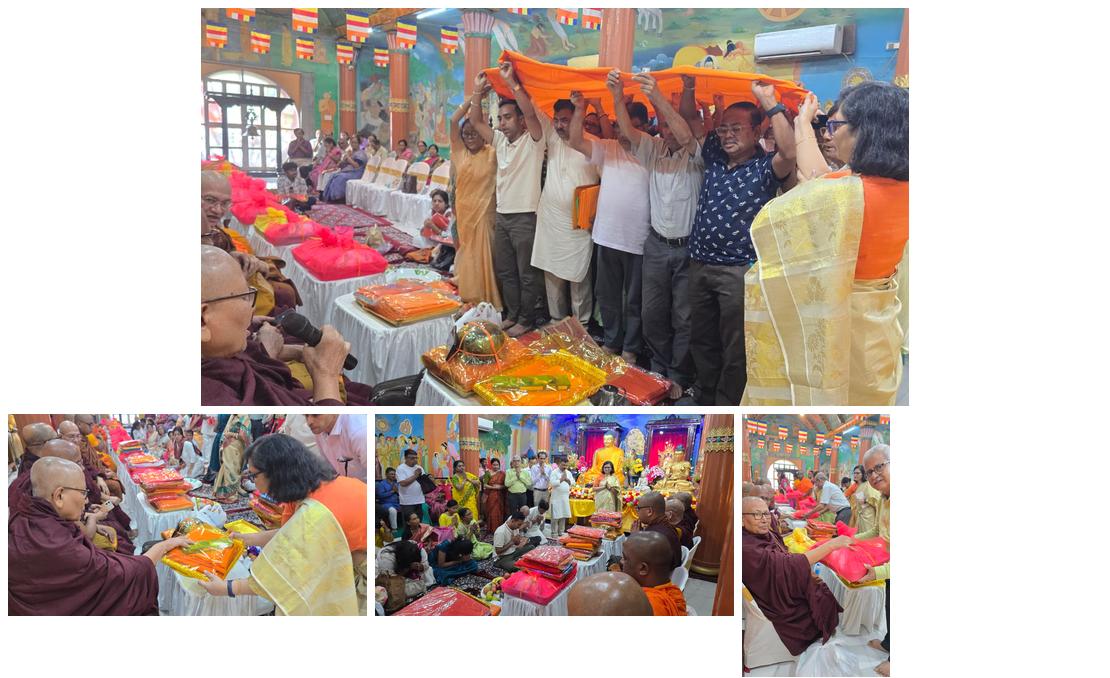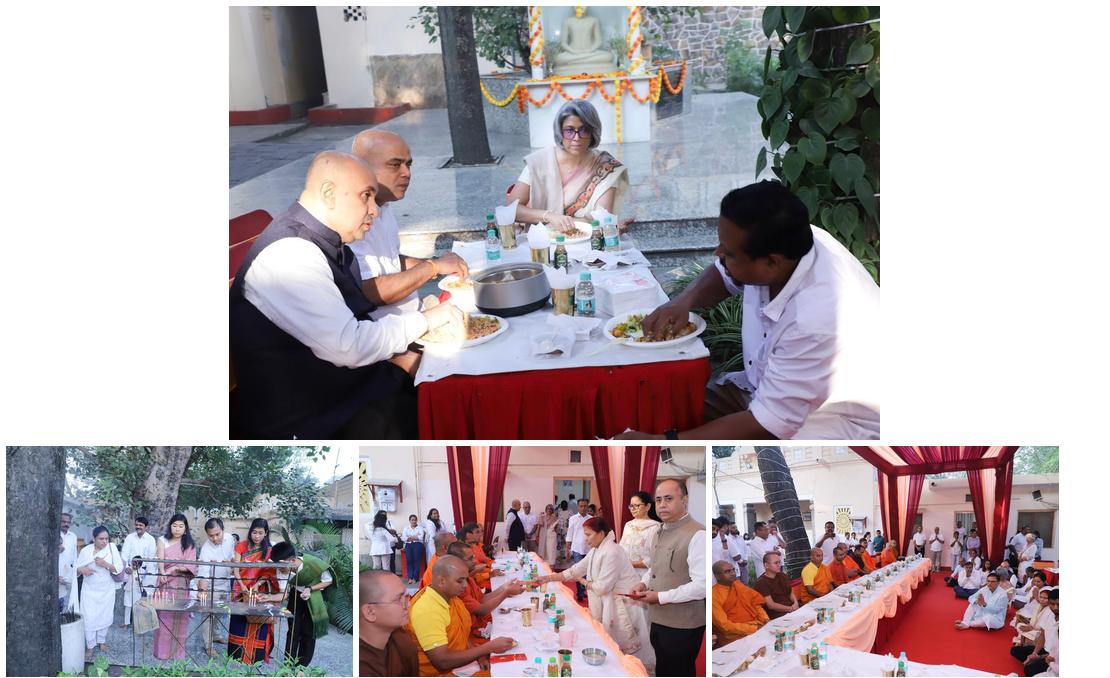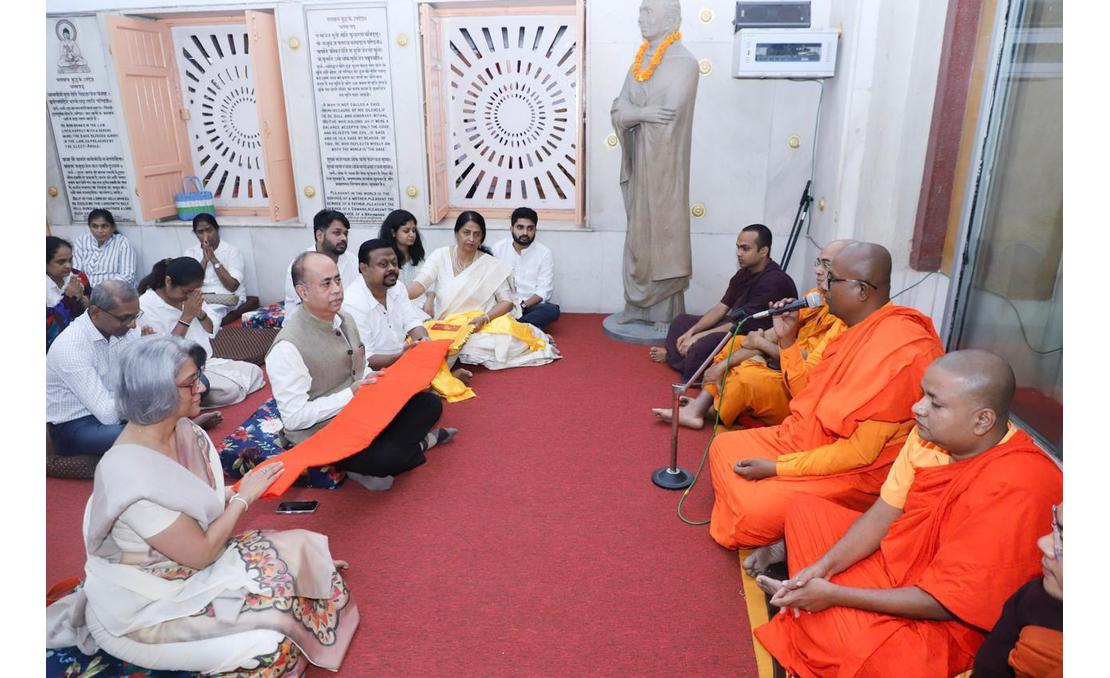The Maha Bodhi Society of India
The headquarters of the Maha Bodhi Society of India (MBSI) is in Kolkata (formerly Calcutta), the onetime capital of British India. Situated at No 4A, Bankim Chatterjee Street, it was one of the prime locations in the old capital, right next to the University. It is known as the Sri Dharmarajika Chaitya Vihara. Its original address was 4A College Square and it was overlooking the College Street- Harrison Road intersection. Ceremonially declared open by the British Governor of Bengal, Lord Ronaldshay on 26 November, 1920, the Kolkata Municipal Council has declared the MBSI building a heritage building.
It was in 1891 that Anagarika Dharmapala arrived in Kolkata on his way back to Ceylon from his first visit to Buddha Gaya. He had taken a vow to re-establish the rights of the Buddhists over the management of Buddha Gaya and had decided to detour to Rangoon, Burma to raise funds for the campaign. It was the Burmese who had some footprint in Buddha Gaya at the time with a pilgrims rest for the few Burmese Buddhists visiting the holy site. Dharmapala, being a member of the Ceylon Theosophical Society, was hosted in Kolkata by members of the Bengal Theosophical Society, He stayed with Neel Kamal Mukherjee, the Secretary of the society. Mukherjee was to be a life-long friend of Dharmapala so much so that Dharmapala had even given the name of Neel Kamal to one of his nephew's, his brother Edmund Hewavitarne's elder son (commonly known as Neil Hewavitarne), who later became a member of the State Council (1936-39) in pre-independent Ceylon.
During his first visit, Dharmapala realised there was no presence of Buddhism in the then Indian capital. He also felt the need to have a place for Buddhists to stay when they came to visit Buddhist sites on a future date. After forming the Maha Bodhi Society in Ceylon, he believed the launching pad for his Indian campaign at Buddha Gaya, and elsewhere, should be from a headquarters in the Indian capital. It took him nearly three decades to build the MBS headquarters Indian branch in Kolkata and named it the Sri Dharmarajika Chaitya Vihara. By then (1915) Dharmapala was not permitted by the colonial British Government to leave Kolkata "by sea or land" due to race riots in Ceylon. His anti-British Imperialist agitation in Ceylon made the Lieutenant Governor of Bengal consider him a trouble-maker. He spent the time during his detention working on the architecture and construction of the headquarters. That same year, the MBS was named the Maha Bodhi Society of India (MBSI). The Chief Justice of the High Court of Calcutta and Vice Chancellor of the University Sir Ashutosh Mukherjee was made the President of MBSI with Dharmapala, as Secretary.
The bulk of the funds for the new building came from Mrs. Mary Foster Robinson of Hawaii - Rs. 65,123. The Maharaja Gaekward of Baroda gave Rs. 10,740. The Anagarika gave Rs. 11,000 in memory of his father, mother, and a brother and his wife. Dr and Mrs C. A. Hewavitarne, gave Rs. 2,000, Mr and Mrs N. D. S. De Silva Rs. 1,500, Mr. P.A. Peris Rs. 1,000 and small donations worth Rs. 3,686 from several others. Among the small donor's was a British soldier, Sgt. Ryan who had done battle during the First World War. He gave Rs. 3.
With the opening of the MBSI headquarters, the British India Government handed over Buddha relics to be enshrined at the Chaitya (temple) which was part of the headquarters building at a well attended ceremony with all the pomp and pageantry. It is said that after the passing away of the Buddha in Kusinara (Kushinagar), his relics were enshrined in eight stupas built by the Kings at the time. Later, Emperor Ashoka had them divided to 84,000 pieces and enshrined in as many stupas over his vast empire in the Indian sub-continent. The relics enshrined at the MBSI headquarters cum Dharmarajika Chaitya Vihara are those that were from the casket of the Bhattiprolu Stupa and later rested in the Madras Museum.
(More details are available in The History of the Sri Dharmarajika Chaitya Vihara; a publication of the Maha Bodhi Society of India, 2012)
The headquarters of the Maha Bodhi Society of India, on Chatterjee Street, Kolkota
MBSI Center Lumbini Katina ceremony

The Maha Bodhi Society of India Buddha Gaya Center in collaboration with Mahaprajapati Gautami Subarti School of Buddhist Studies Dehradun Ras Bihari Subharti University Dehradun with global partners from Myanmar held a seminar on ‘Bodh Gaya and the Global Legacy of Buddhism; History, Heritage and Contemporary Relevance’ at the Buddha Gaya Center on September 21, 2025.










